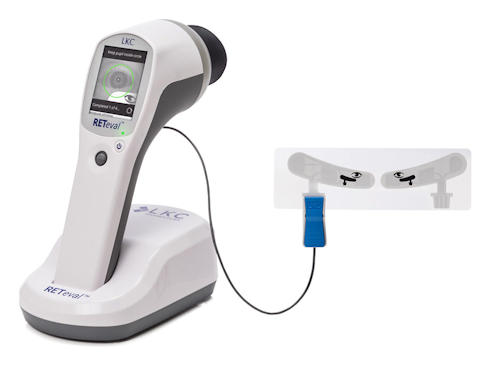
Electroretinography (ERG) is a neurophysiological test that measures the electrical activity of the retina layer of the eye. This test is used by the expert physicians at SEVGİGÖZ to assess the functionality of the retina and aid in the diagnosis and monitoring of various eye diseases. ERG plays a critical role in diagnosing many retinal diseases by evaluating the functions of retinal cells.
The ERG test is typically performed using an array of electrodes. While the individual is instructed to look at visual stimuli, the electrodes are placed on the surface of the eye to measure the electrical activity in the retina layer. This activity occurs as visual stimuli are transmitted from the retina to the brain.
This test is particularly valuable in assessing the functionality of retinal cells. For example, by measuring the response of retinal cells to light, it aids in the diagnosis of various retinal diseases. The ERG test is an important tool in the diagnosis of diseases such as retinitis pigmentosa, retinal degenerations, and macular degeneration.
The ERG test is typically performed using an array of electrodes. While the individual is instructed to look at visual stimuli, the electrodes are placed on the surface of the eye to measure the electrical activity in the retina layer. This activity occurs as visual stimuli are transmitted from the retina to the brain.
This test is particularly valuable in assessing the functionality of retinal cells. For example, by measuring the response of retinal cells to light, it aids in the diagnosis of various retinal diseases. The ERG test is an important tool in the diagnosis of diseases such as retinitis pigmentosa, retinal degenerations, and macular degeneration.
The ERG test is also used in the preoperative evaluation processes of eye surgeries such as cataract surgery or intraocular lens implantation. This test can help monitor retinal function post-surgery and facilitate early detection of postoperative complications.




